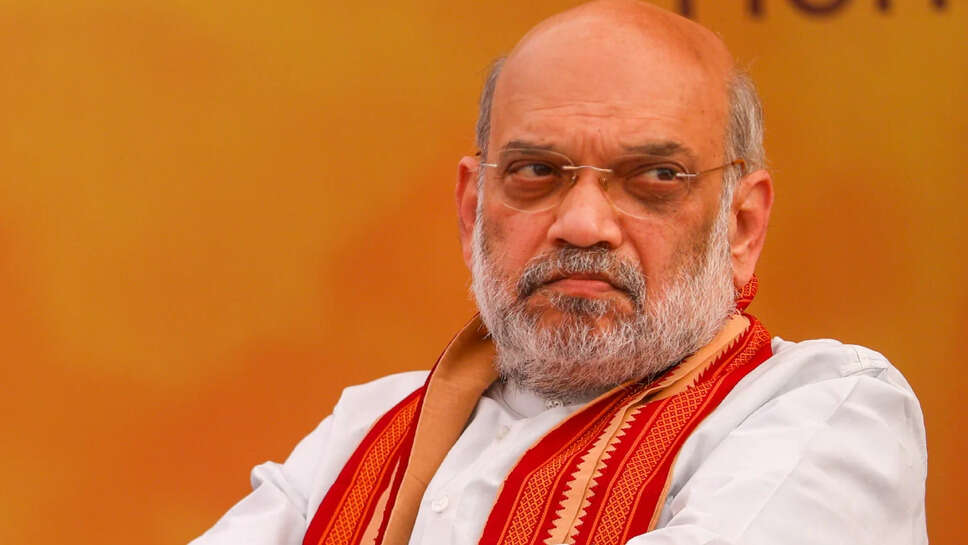BJP’s Bengal Blueprint: Amit Shah Guides Party’s New Poll Roadmap

The Bharatiya Janata Party (BJP) in West Bengal has begun laying the groundwork for the 2026 state Assembly elections, following a strategic brainstorming session with Union Home Minister and senior party leader Amit Shah. The meeting, held recently in New Delhi, marks a decisive turn in the BJP’s electoral approach in Bengal after a series of setbacks and internal fractures since the 2021 state elections.
The roadmap includes structural overhauls, renewed grassroots mobilization, micro-targeted outreach, and a sharper ideological campaign. This comprehensive approach—driven by Shah’s counsel—is expected to give the party a fresh edge as it seeks to position itself as a credible alternative to the ruling Trinamool Congress (TMC).
A High-Level Strategy Session
According to senior BJP sources, the Delhi meeting was attended by key Bengal BJP leaders, including Sukanta Majumdar (state BJP president), Suvendu Adhikari (Leader of Opposition), Dilip Ghosh, and other top functionaries. Amit Shah is believed to have listened to detailed reports about the party’s current organisational health, its electoral performance in the recent Lok Sabha elections, and local feedback from booth-level workers.
Shah reportedly advised the leadership to focus on cohesion within the state unit, deploy sharper booth-level strategies, and fix the disconnect with grassroots workers, which has become a growing concern in the state.
Post-Lok Sabha Assessment Sparks Urgency
The BJP’s internal assessment after the 2024 Lok Sabha elections triggered a sense of urgency. The party’s tally in West Bengal dropped to 12 seats, down from 18 in 2019. In contrast, the TMC managed to reclaim lost ground, winning 29 out of 42 seats, a stark improvement that jolted the saffron camp into introspection.
The state leadership admitted to the Centre that factionalism, weak booth management, and ineffective local communication had hurt the party’s prospects. Amit Shah’s feedback reportedly included an honest appraisal of what went wrong and how it could be fixed over the next 18 months.
Grassroots Reconnection on the Agenda
One of the key suggestions from Shah’s end was to revive lost connect with grassroots karyakartas (workers)—many of whom felt demotivated or sidelined after the 2021 Assembly loss. A new organisational model will be introduced across districts to identify, train, and empower booth-level workers in each constituency.
Each MP and MLA has been asked to personally oversee the “Booth Revamp Mission,” which will begin from August and run till January 2026. Regular visits, cluster meetings, and on-ground issue collection are expected to be institutionalised.
Rethinking Candidate Selection
Sources within the Bengal BJP indicate that the party is also reconsidering its candidate selection formula. During the 2021 polls, a significant number of candidates were imported from other parties, especially from the TMC, leading to resentment among long-time BJP cadres.
Amit Shah is said to have cautioned against such shortcuts. The 2026 strategy will prioritize loyalty, grassroots involvement, and local acceptance, rather than celebrity appeal or political migration.
The Central leadership has advised the state unit to start preparing a list of “winnable but rooted” candidates from each block by early 2026, based on inputs from the district and mandal committees.
Caste and Community Dynamics in Focus
Another key element of the roadmap is a deeper engagement with caste and community clusters. The BJP plans to launch targeted outreach campaigns for SC, ST, OBC, and tribal groups, which represent a significant vote share in Bengal, particularly in north and western districts.
This approach is partly inspired by the “Modi Parivar” model that performed well in Uttar Pradesh and Madhya Pradesh. Special social media cells and ground events will highlight schemes and narratives that align with community-specific needs.
Countering TMC’s Narrative
Shah has advised Bengal BJP leaders to counter the TMC’s welfare-heavy narrative by focusing on governance lapses, corruption scandals like the teachers’ recruitment scam, and law-and-order issues—particularly crimes against women and political violence.
A state-wide “Jan Aakrosh Yatra” (People’s Anger March) is expected to be launched later this year to highlight grievances in rural areas and promote BJP as a force of change. The idea is to generate local pressure and mobilise non-TMC voters under a unified banner.
Digital & Youth Strategy for a New Bengal
Bengal BJP is also crafting a youth-specific digital strategy, targeting first-time voters and the urban middle class. The campaign will see extensive use of regional influencers, memes, WhatsApp networks, and short-format videos highlighting development, national pride, and local issues.
A new youth outreach program titled “Yuva Sankalp Bengal” will start this winter, involving campus connect drives, district-level hackathons, and curated events to listen to the aspirations of Bengal’s under-30 population.
The Final Goal: Bengal in 2026
The roadmap drawn under Amit Shah’s watchful eye is a long-term plan that will unfold in phases—first focusing on internal restructuring, then on voter engagement, and finally candidate deployment and mass mobilisation by mid-2026.
While the BJP is not under any illusion about the tough fight ahead in Bengal—especially against a formidable Mamata Banerjee—it believes that with early preparation, grassroots discipline, and central guidance, the political tides could shift.
One leader said, “We’ve seen in states like Tripura and Assam that early planning and consistent outreach pays off. Bengal won’t be different if we stay united and focused.”
With Amit Shah stepping in as both strategist and mentor, the Bengal BJP is now bracing for a renewed electoral push. The 2026 Assembly elections may still be months away, but for the saffron camp, the campaign has already begun—one booth, one worker, and one narrative at a time.
If executed effectively, this roadmap could offer the BJP its best shot yet at breaking through Bengal’s complex political terrain and establishing itself as more than just the opposition.
.jpg)